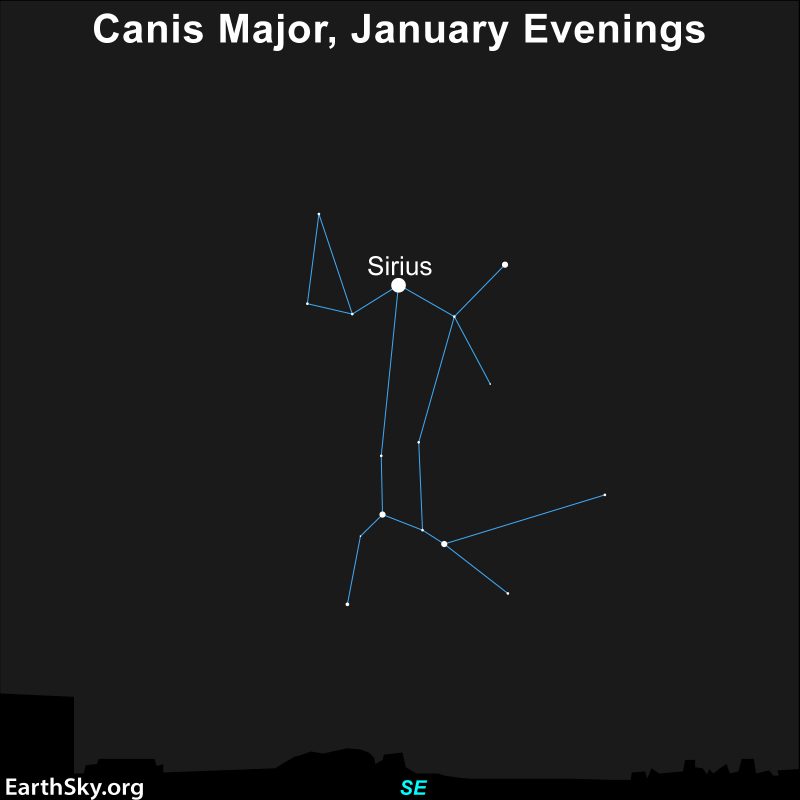
For those of us in the Northern Hemisphere, winter is the best time to observe the constellation Canis Major the Greater Dog. It’s easy to find since it follows Orion the Hunter up from the horizon, heading from southeast to southwest. Also, Sirius is the brightest star not only in Canis Major but in the entire sky. The fact is, it’s so bright in our sky because it’s one of the closest stars to Earth, at 8.6 light-years away.
The mythology of Canis Major
Canis Major is the Greater Dog, one of Orion’s two hunting dogs that follow him in the sky. Likewise, Canis Minor the Lesser Dog also has a bright star – the eighth brightest in the sky – Procyon. The mythological story says that the two dogs are pursuing a rabbit, and, indeed, the constellation Lepus the Hare is close to Canis Major and just below the feet of Orion.
The 2024 lunar calendars are here! Best New Year’s gifts in the universe! Check ’em out here.
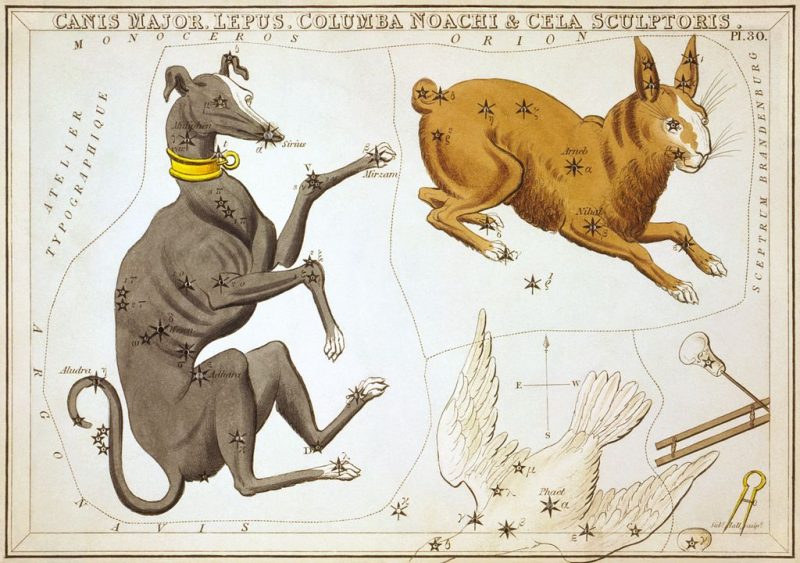
Finding Sirius and Canis Major
Conveniently, Canis Major is easy to find. Its bright star Sirius and location near Orion make it one of the easiest constellations to spot in the night sky. On winter evenings in the Northern Hemisphere, Orion rises first from the southeastern horizon, and bright Sirius anchoring Canis Major follows. In addition, Sirius marks the location of the Greater Dog’s collar. The head is a dimmer triangle, but bright stars mark his front foot and his rear flank and tail.
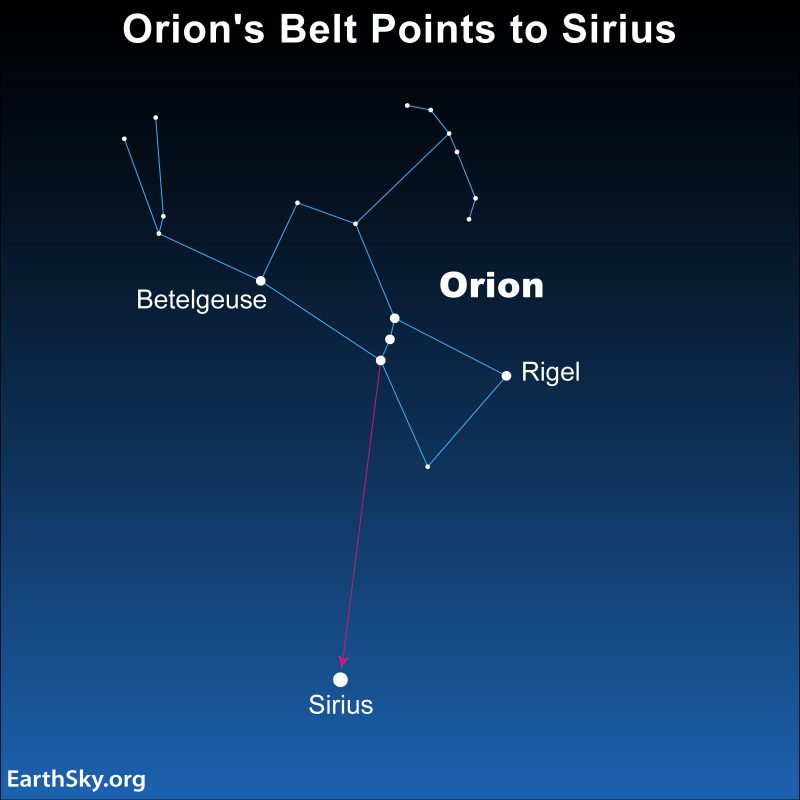
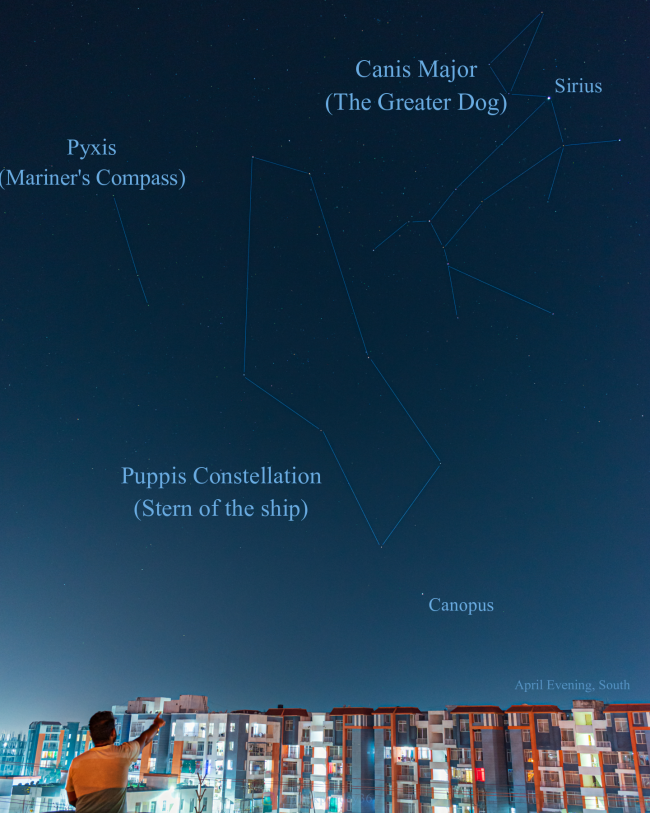
The stars of Canis Major
Sirius holds the nickname of the Dog Star because it lies in the constellation of the Greater Dog. At magnitude -1.44, it outshines every other star in the sky as seen from Earth. Sirius, which also has the more formal name of Alpha Canis Majoris, is a binary star system. Sirius A is the younger, hotter and brighter star, with Sirius B playing the part of the dim companion.
Correspondingly, the second brightest star in Canis Major is toward the back portion of the dog, where its hind leg would connect with its body. This star is Adhara, also known as Epsilon Canis Majoris, a magnitude 1.5 beacon lying 430 light-years away. And then, just above on the Greater Dog’s body, where the tail connects to the torso, is Wezen, also known as Delta Canis Majoris, a magnitude 1.83 star that would be much brighter than Sirius if it were closer. Wezen lies about 1,800 light-years away.
The fourth brightest star in Canis Major is 5 1/2 degrees from Sirius, marking the front foot of the dog. This star is Mirzam (Beta Canis Majoris), a magnitude 1.98 star. It’s about 500 light-years distant. Finally, the last bright star in Canis Major is back toward the rear of the dog. Aludra (Eta Canis Majoris), at magnitude 2.45, marks the tip of the Dog’s tail. As a matter of fact, it lies farther away than all the other bright stars in Canis Major, at 3,000 light-years.
In addition, three stars form a triangle near Sirius and mark the Dog’s head. They’re best seen from dark skies. They range in magnitude from 4.0 to 4.3.
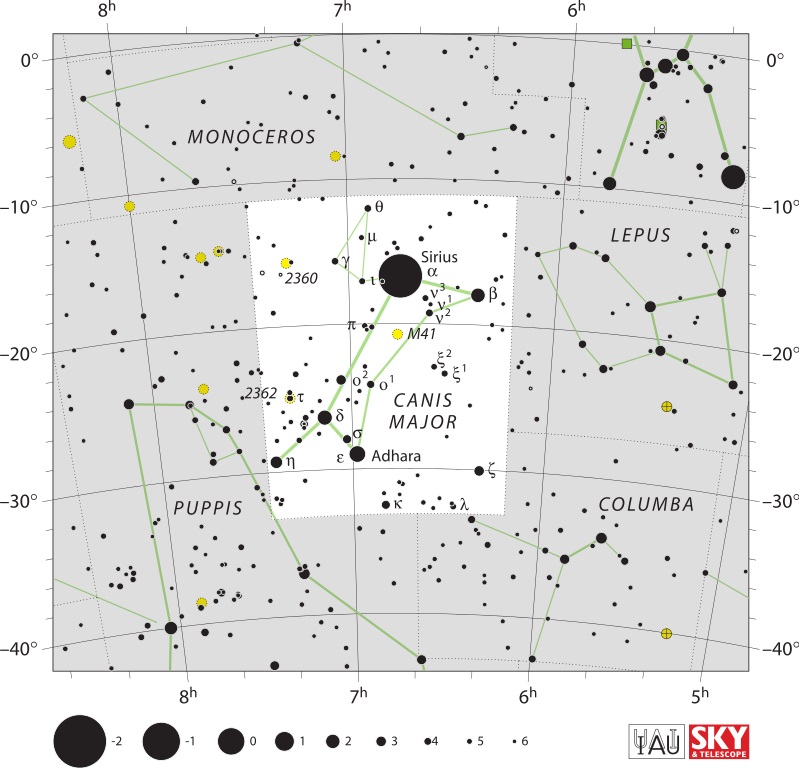
Deep-sky objects in the Greater Dog
There is only one Messier object in Canis Major, and that is M41. M41 is a relatively bright open cluster that shines with a magnitude of 4.5. The cluster lies about four degrees from Sirius, in the general location of what would be the Dog’s heart. Of course, you should be able to spot it without any optical aid, but binoculars improve the view.
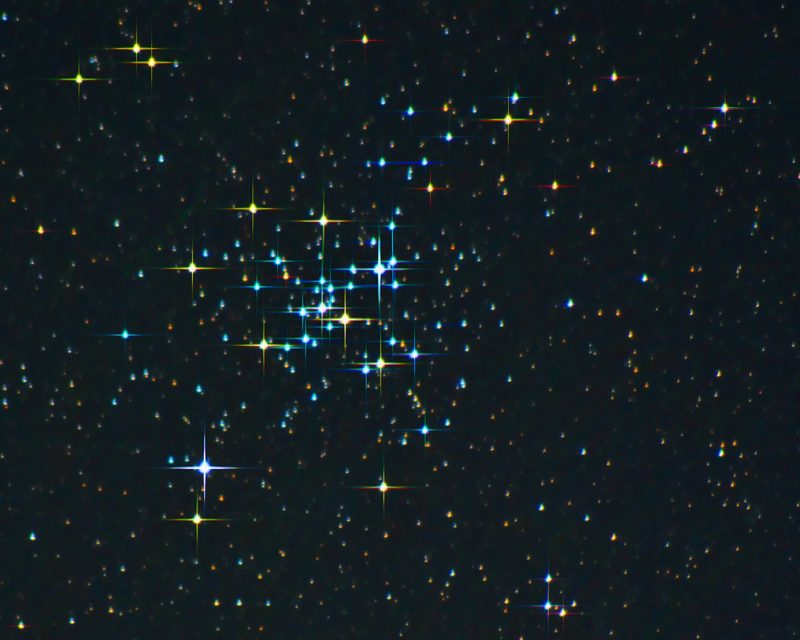
Also, there’s a pretty nebula in Canis Major that’s beautiful in astrophotos, even if it’s too far away and dim for you to see through binoculars. In the corner of the constellation above the dog’s head, almost nine degrees northeast of Sirius, is NGC 2359, or Thor’s Helmet. This strange-looking nebula has a massive Wolf-Rayet star at its core. The nebula has a central bubble shape, with appendage-like tentacles streaming out on various sides. Lying about 15,000 light-years away, this nebula has a magnitude of 11.45, a good challenge for telescope owners.
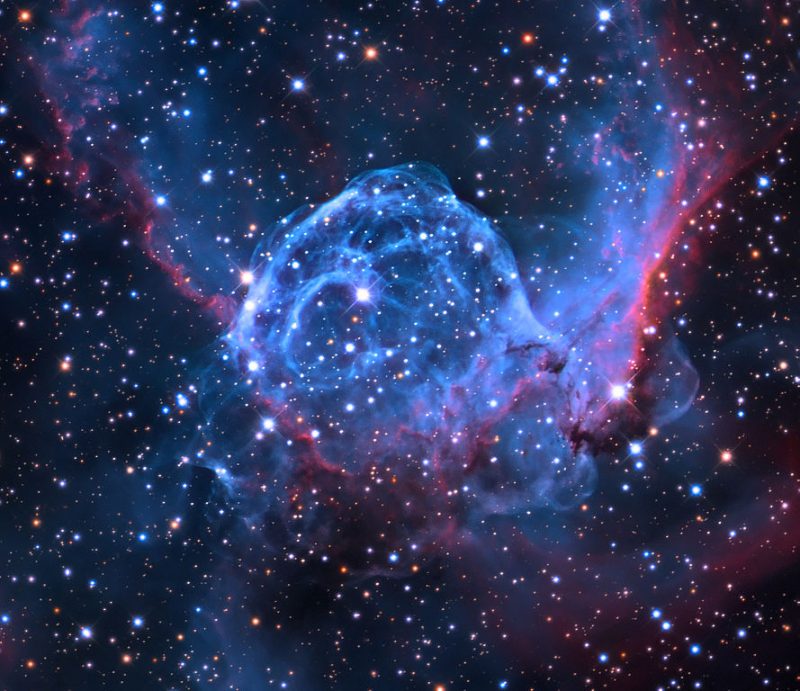
Bottom line: Canis Major the Greater Dog is most famous for being home to the brightest star in the sky, Sirius. Of course, you can’t miss Sirius in the evening sky.
The post Canis Major and brilliant Sirius in the New Year first appeared on EarthSky.
from EarthSky https://ift.tt/mM7cszA

For those of us in the Northern Hemisphere, winter is the best time to observe the constellation Canis Major the Greater Dog. It’s easy to find since it follows Orion the Hunter up from the horizon, heading from southeast to southwest. Also, Sirius is the brightest star not only in Canis Major but in the entire sky. The fact is, it’s so bright in our sky because it’s one of the closest stars to Earth, at 8.6 light-years away.
The mythology of Canis Major
Canis Major is the Greater Dog, one of Orion’s two hunting dogs that follow him in the sky. Likewise, Canis Minor the Lesser Dog also has a bright star – the eighth brightest in the sky – Procyon. The mythological story says that the two dogs are pursuing a rabbit, and, indeed, the constellation Lepus the Hare is close to Canis Major and just below the feet of Orion.
The 2024 lunar calendars are here! Best New Year’s gifts in the universe! Check ’em out here.

Finding Sirius and Canis Major
Conveniently, Canis Major is easy to find. Its bright star Sirius and location near Orion make it one of the easiest constellations to spot in the night sky. On winter evenings in the Northern Hemisphere, Orion rises first from the southeastern horizon, and bright Sirius anchoring Canis Major follows. In addition, Sirius marks the location of the Greater Dog’s collar. The head is a dimmer triangle, but bright stars mark his front foot and his rear flank and tail.


The stars of Canis Major
Sirius holds the nickname of the Dog Star because it lies in the constellation of the Greater Dog. At magnitude -1.44, it outshines every other star in the sky as seen from Earth. Sirius, which also has the more formal name of Alpha Canis Majoris, is a binary star system. Sirius A is the younger, hotter and brighter star, with Sirius B playing the part of the dim companion.
Correspondingly, the second brightest star in Canis Major is toward the back portion of the dog, where its hind leg would connect with its body. This star is Adhara, also known as Epsilon Canis Majoris, a magnitude 1.5 beacon lying 430 light-years away. And then, just above on the Greater Dog’s body, where the tail connects to the torso, is Wezen, also known as Delta Canis Majoris, a magnitude 1.83 star that would be much brighter than Sirius if it were closer. Wezen lies about 1,800 light-years away.
The fourth brightest star in Canis Major is 5 1/2 degrees from Sirius, marking the front foot of the dog. This star is Mirzam (Beta Canis Majoris), a magnitude 1.98 star. It’s about 500 light-years distant. Finally, the last bright star in Canis Major is back toward the rear of the dog. Aludra (Eta Canis Majoris), at magnitude 2.45, marks the tip of the Dog’s tail. As a matter of fact, it lies farther away than all the other bright stars in Canis Major, at 3,000 light-years.
In addition, three stars form a triangle near Sirius and mark the Dog’s head. They’re best seen from dark skies. They range in magnitude from 4.0 to 4.3.

Deep-sky objects in the Greater Dog
There is only one Messier object in Canis Major, and that is M41. M41 is a relatively bright open cluster that shines with a magnitude of 4.5. The cluster lies about four degrees from Sirius, in the general location of what would be the Dog’s heart. Of course, you should be able to spot it without any optical aid, but binoculars improve the view.

Also, there’s a pretty nebula in Canis Major that’s beautiful in astrophotos, even if it’s too far away and dim for you to see through binoculars. In the corner of the constellation above the dog’s head, almost nine degrees northeast of Sirius, is NGC 2359, or Thor’s Helmet. This strange-looking nebula has a massive Wolf-Rayet star at its core. The nebula has a central bubble shape, with appendage-like tentacles streaming out on various sides. Lying about 15,000 light-years away, this nebula has a magnitude of 11.45, a good challenge for telescope owners.

Bottom line: Canis Major the Greater Dog is most famous for being home to the brightest star in the sky, Sirius. Of course, you can’t miss Sirius in the evening sky.
The post Canis Major and brilliant Sirius in the New Year first appeared on EarthSky.
from EarthSky https://ift.tt/mM7cszA

Aucun commentaire:
Enregistrer un commentaire